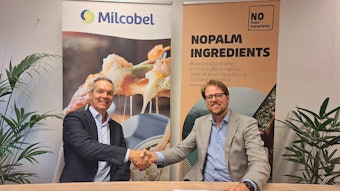“Imitation is not just the sincerest form of flattery—it’s the sincerest form of learning.” —George Bernard Shaw
Cosmetics have ingredient labels. The original intent was to allow consumers to know what they are buying and to make more informed decisions on which products to use. In reality, the main beneficiaries are chemists trying to duplicate the formula—a process often politely termed “reverse engineering.” One could just read the label and know what is in the product, right? Well, not exactly. Many ingredient names cover a broad range of materials. A chemist trying to duplicate a product using the label information needs a strong sense of what these names really mean and how variations in the raw materials affect product appearance and performance.
Consider a fanciful cleanser label containing the following ingredients:
- Water
- Sodium laureth sulfate
- Cocamidopropyl Betaine
- Carbomer
- Dimethicone
- Aloe Barbadensis Leaf Juice
- Triethanolamine
- Polylysine
- Sodium Chloride
- Citric Acid
- Fragrance
Most labs have a hot plate, microwave, balance, viscometer and pH meter, and that will go a long way toward analyzing this formula. The first property we want to know is the percent solids. That is easy to do: weigh a small amount of the product, put it on a hot plate at a low temperature (don’t burn it!) or microwave until the weight remains constant, and the weight difference divided by the initial weight times 100% gives the result. It is not exactly just the water that is lost, as volatile silicones and fragrance materials can evaporate too, but it’s a good approximation.
Viscosity and pH are obvious properties that characterize the product and are easy to measure. Since this is a cleanser, foam is also important. A dilute solution can be placed in a kitchen blender for a few seconds and the foam height measured. The foam initially produced is called the flash foam. Wait a little while and you get the foam retention. Put in a few drops of olive oil and you can see the effect when the cleanser has to combat oily hair, for example.
Delving further into the specific ingredients, remember they are labeled in order of predominance, which is helpful, but the gloves are off under 1%—and a lot can happen with something like a carbomer (used as a thickener, stabilizer and emulsifier) between 0.01% and 0.99%. With our hypothetical product, probably everything below the cocamidopropyl betaine is under 1%. There are several reasons while the “same’ material can be different. For example, “carbomer” represents a family, not a precise material. Various starting materials can be used to make the product. Different byproducts or impurities can be present. Even if all the manufacturing specifications are identical, different plants with different equipment can get different results. Differences may by minute, but the consequences in a finished product can be huge.
A Little More Depth
Sodium laureth sulfate is ethoxylated sodium lauryl sulfate (a detergent, surfactant and foaming agent), and the 2 mole version is the most common [a “mole” is a chemical mass unit]. It can be called more precisely “sodium laureth-2 sulfate,” but the “2” is an average value.
The material may all be exactly 2 moles. But if it is 50% 1 mole and 50% 3 moles, it also averages to 2 moles—although it actually contains no 2 moles at all. Each mole of ethoxylation changes the irritation and foaming properties, so these 2 versions will perform quite differently.
Look in the Cosmetic Ingredient Dictionary (www.cosmeticsinfo.org/Ingredient-dictionary) for cocamidopropyl betaine and you will find a long list of suppliers and trade names. Often the same company will sell a half dozen versions. How can they all be cocamidopropyl betaine? For starters, the commercial product is 30% active and 5% salt. Different starting materials can have a profound effect. It is possible to get the carbon chain from the methyl ester of C12-18 or from coconut oil. The methyl ester will add no glycerin; coconut oil will add 5-10% glycerin to the betaine, having a significant effect on viscosity building and foam.
Carbomer is a generic term for “a homopolymer of acrylic acid crosslinked with an allyl ether of pentaerythritol, an allyl ether of sucrose, or an allyl ether of propylene.” There is a lot of wiggle room in that definition. And beware: most carbomers do not work well in surfactant systems.
BF Goodrich Performance Materials division developed the basic products many years ago, and through evolution, that company became Lubrizol. There are nine carbomers on the Lubrizol website (www.lubrizol.com). Some are described as “traditional” (the 934, 940 and 941 products); some are newer, easy to disperse versions. It may be all about the label, so if you want to list “carbomer” on the label and flexibility in the ingredient, look at products such as Lubrizol’s Ultrez 10, which thickens, stabilizes and offers sensory benefits.1
Dimethicone is a polymer, and its viscosity and feel change dramatically with molecular weight. Whether it is a thin liquid or a gum, the label stays the same.
Now we need some Aloe barbadensis leaf juice (aloe vera). There are many suppliers, so, using the GCI directory (dir.gcimagazine.com/search/gci_supplier.html) and simply going in alphabetical order, we call Active Organics. They have multiple versions with options to customize. You can have a syrup or an oily liquid. The products are based on 0.5% solid content, as found naturally in aloe leaf. The versions are oil soluble, water soluble in glycerin or powder. For the duplicating chemist, there is a road map since some versions are blends with diluents like mineral oil, safflower seed oil or castor seed oil—all of which must appear separately on the label.
Next, polylysine is a preservative made by fermentation. As a polymer, it can have a wide range of molecular weights, and not all molecular weight polylysines have the same preservative effectiveness. A molecular weight of 3000 to 5000 Daltons would be good.
The base must be put together in the proper order—the triethanolamine added to neutralize the carbopol and the citric acid and sodium chloride are used at the end to adjust pH and viscosity, respectively. The viscosity response is the salt curve, where the viscosity rises, peaks and falls.
Conventional wisdom is to aim a bit to the left of the curve so a mistake won’t be a disaster. A mistake to the right of the peak can lead to a thin product with no easy fix.
And lastly, of all the vague terminology on a label, none is less precise than “fragrance.” It is a mixture that can include natural oils, synthetic chemicals, antioxidants, solvents and solubilizers. When trying to match an existing formula/scent, one could try to have a fragrance company just match the odor by smell, but generally analytical work is needed. First solvents are used to separate the fragrance from the base, and then gas chromatography-mass spectrometry is used to separate and identify the components of the fragrance. The formula is fine-tuned by a perfumer or trained duplication chemist.
In Summary
There are many nuances in formulating not covered here, but the basic process is clear: get the product, read the label, check the properties, know the individual materials, guess a formula and them make adjustments. The ultimate test is for a random user to not be able to tell the products apart in appearance or performance. For more insights and advice, visit www.chemistscorner.com, a treasure for aspiring cosmetic chemists and those who simply want to understand basic formulating—or pick up a copy of Beginning Cosmetic Chemistry.
References
Steve Herman is president of Diffusion LLC, a consulting company specializing in technology development in the beauty and cosmetic industry. He is a principal in PJS Partners, offering formulation, marketing and technology solutions for the personal care and fragrance industries. He served the New York Society of Cosmetic Chemists (NYSCC) as chapter chair in 1992 and 2013, and is an adjunct professor in the Fairleigh Dickinson University masters in cosmetic science program. He also is a fellow in the Society of Cosmetic Chemists (SCC).










